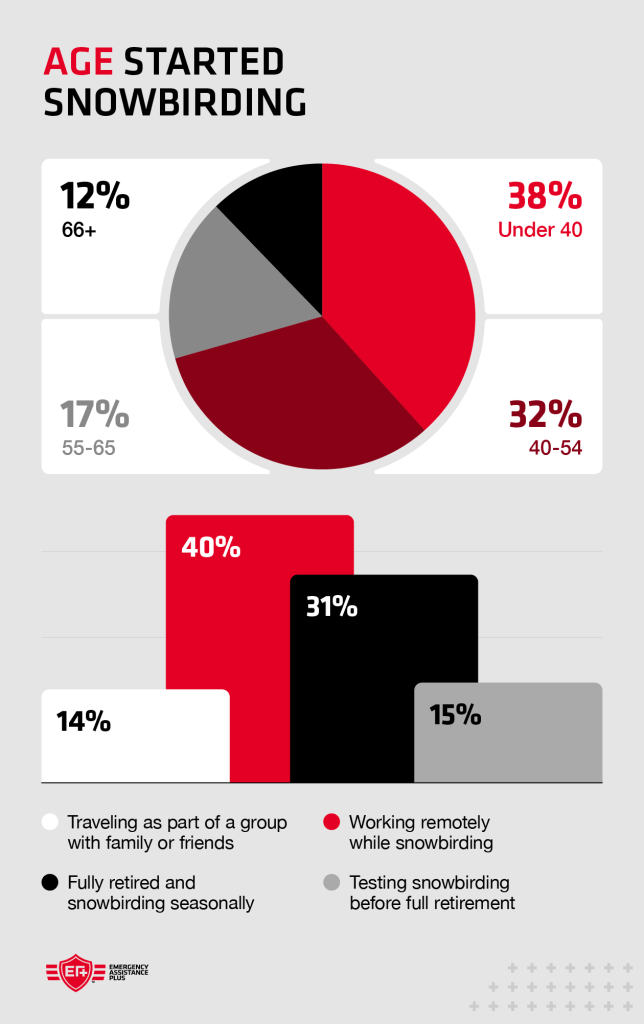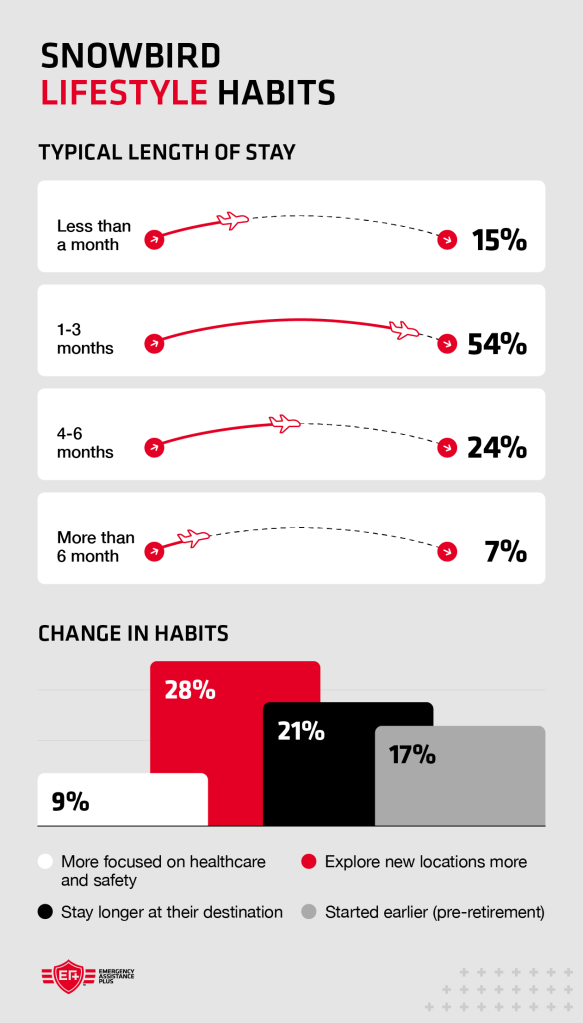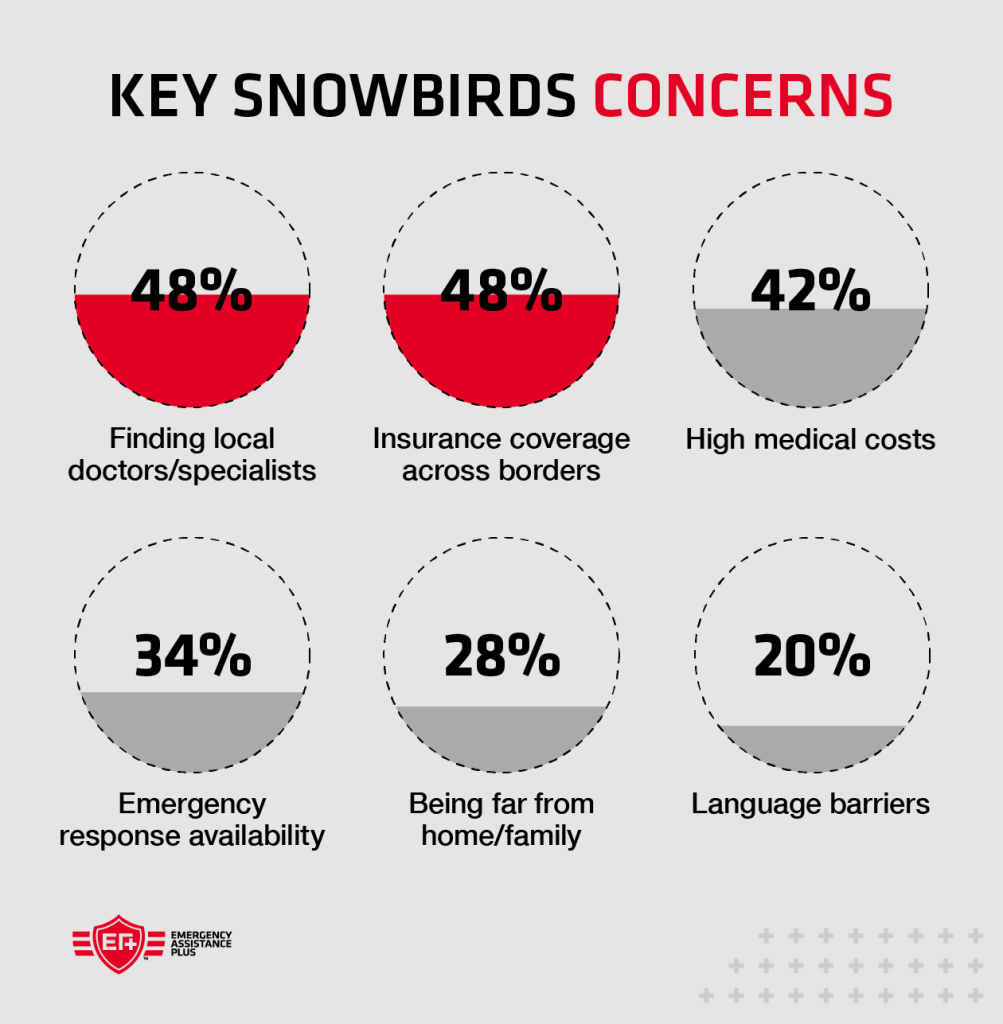Travel Tips
Snowbirding is the practice of spending winters in a warmer climate while living elsewhere the rest of the year. Once mostly for retirees, it’s now growing in popularity among pre-retirees and remote workers who have the flexibility to live seasonally.
Imagine you’re a working professional in your early 50s, living in Minneapolis, and your company just made remote work permanent. With the freedom to work from anywhere, you spend winters in Florida, joining a growing number of snowbirds who escape the cold, stay productive, and enjoy more time outdoors.
Once seen as a retirement lifestyle, snowbirding is now popular among flexible families and individuals who work remotely, sometimes called “zoombirds,” logging in from sunny climates. Roughly 35% of remote-capable workers now work from home full time, enabling more people to live and work from warmer places and embrace the snowbird lifestyle. While snowbirding offers warmth and freedom, it also brings health and safety challenges when you’re far from home.
Whether you’re easing into retirement or balancing work and travel, preparing for emergencies is essential. As seasonal travel grows, understanding travel safety trends helps you stay protected while living between locations.
We surveyed snowbirds to learn what matters most to them and what you need to know before adopting this lifestyle. Their insights offer valuable tips for preparation, helping you make the most of snowbirding while staying safe.
Traditionally, snowbirding was associated with retirees seeking warmer climates during the colder months. However, our survey reveals a significant shift, influenced in part by the rise of remote work and changing lifestyle priorities. Notably, 70% of snowbirds began this lifestyle before reaching the traditional retirement age of 60, and 40% continue to work remotely while traveling.

This evolving dynamic gives pre-retirees and mid-career professionals the freedom to live and work from warmer locations, but it can bring new healthcare considerations.
While traditional retirees traveling within the U.S. can rely on Medicare, younger snowbirds often face gaps in coverage, out-of-network costs, or limited access to care while away from home. As more working adults embrace this lifestyle, preparation becomes essential for staying safe and supported on the move.
Beyond starting earlier, snowbirds are also changing how long and where they choose to spend their seasons.
The typical snowbird season runs from October through April, but the length of each traveler’s stay often depends on weather preferences, budget, medical needs, and personal schedules.
On average, 54% of snowbirds stay one to three months, while 31% extend their stay four or more months each year. These patterns were once shaped almost exclusively by retirement lifestyles, but remote work is enabling a flexible and extended version of snowbirding for a new generation of travelers.
Looking closer at traditional, fully retired snowbirds shows a familiar rhythm in their travel habits. Many choose the same destination each winter, often for a few months at a time. These travelers tend to plan around set timelines, often tied to rental agreements or property ownership in places like Florida, Arizona, or Southern California.
But that pattern is starting to shift. Half of snowbirds say they still return to familiar places but enjoy mixing in new destinations. Over the past three years, this behavior has become more common, including:

These changes reflect a more dynamic, experience-driven approach to seasonal travel, one increasingly shaped by remote work and lifestyle flexibility. With that shift comes a stronger focus on practical needs, including access to quality healthcare.
Healthcare is becoming a bigger influence on how snowbirds pick their destinations, especially for older travelers who face greater risks like chronic conditions and medical emergencies. Roughly 6 of every 10 snowbirds consider access to quality healthcare a top priority when choosing where to spend their season.
While beaches and warm weather remain key motivators, many travelers are thinking ahead about medical logistics. Top concerns include:

For some travelers, the uncertainty around unfamiliar healthcare systems, managing chronic conditions on the road, or navigating insurance limitations can be a major source of stress. The idea of needing urgent care far from home can be daunting.
To stay ahead of these risks, many snowbirds are proactively purchasing protection plans, choosing destinations with strong medical infrastructure, and even preparing for long-distance medical transport in case of an emergency.
Health and safety are just as important for younger zoombirds. Illness or injury can quickly disrupt not only travel plans but also their ability to work and earn income while away. That’s why securing reliable healthcare access is essential, alongside emergency travel protection like Emergency Assistance Plus® (EA+ ®), which is key to staying safe and keeping work on track wherever the season takes you.
From planning your first trip to fine-tuning your seasonal routine, a few proactive steps can make a big difference in staying healthy while traveling.
A snowbirding guide takes the guesswork out of seasonal travel, helping you stay on top of the details and focus on enjoying the journey.
Many snowbirds stay ahead of their health needs by booking checkups before leaving, refilling prescriptions to cover the trip, and making sure they can access care both at home and wherever they stay.
To support your planning, here are practical tips for a safe and enjoyable trip.
Before traveling, it’s important to research the healthcare options available at your destination. This includes understanding what your health insurance covers while traveling, as many plans limit out-of-network or out-of-state benefits.
For extra travel protection alongside your healthcare plans, travel assistance programs like EA+ offer services such as emergency medical transportation and help coordinating care after hospitalization. Choosing the right membership for your travel style involves looking for services such as 24/7 emergency support, medical evacuation options, and access to a global network of providers.
Travel insurance may also provide coverage for unexpected medical expenses, trip interruptions, or evacuations, though its scope and benefits can vary. Some snowbirds opt for snowbird travel insurance plans aimed at seasonal travelers, which might offer additional protection depending on individual needs.
Researching these options ahead of time can help ensure you have the appropriate protection to stay safe and avoid costly surprises during your travels.
Get into the habit of sharing your travel itinerary and important contact information with someone you trust. This helps ensure someone knows where you are and how to reach you in case of an emergency—a simple but vital step, especially for senior travelers.
Here are a few key steps to keep your loved ones informed:
Keeping your family or friends in the loop can provide extra peace of mind and quick assistance if needed during your snowbird journey.
While you travel, it’s important to have essential medical details on hand in case of an emergency. First responders and healthcare providers need quick access to information like your blood type, allergies, medications, chronic conditions, and emergency contacts. Having this available can help with faster, safer treatment when it matters most.
To keep this info accessible and secure:
Make sure someone you trust also knows how to access this information in case you’re unable to speak for yourself.
If you’re working remotely or simply staying connected on the go, using a VPN on public Wi-Fi helps protect your data. Keep your devices updated with the latest security patches, and consider a password manager to maintain strong, unique passwords.
Backing up important files to the cloud and carrying a mobile hotspot can ensure you stay connected safely, even when internet access is spotty. Using tech travel tips like this will keep your digital devices secure while traveling.
As snowbirding evolves and more people embrace a flexible travel lifestyle, it’s important to put safety first by preparing for any potential emergencies. With longer stays, remote work, and changing healthcare needs, having reliable travel protection to help manage your journey home in case of illness or injury is essential to enjoying your travels with peace of mind.
Whether you’re exploring a hidden gem in the U.S. or traveling abroad, EA+ offers travel protection plans for snowbirds, which include 24/7 emergency support, medical evacuation services if you’re hospitalized.
In the event of a medical emergency, unexpected trip interruption, or other travel challenges, EA+ is there to support your travel needs and give you the confidence to explore safely and securely.
Enroll nowEmergency Assistance Plus (EA+) conducted two surveys from July 9th-15th, 2025, surveying 564 EA+ members and 718 adults ages 45+, totaling 1,282 respondents via Qualtrics. Data is unweighted, with a margin of error of approximately ±3% at a 95% confidence level.
The names of the individuals and certain identifying details have been changed to protect member privacy. Any copy in brackets has been modified to clarify the nature of the services provided based on this member’s specific medical needs as determined by EA+.
A snowbird is a person who lives in colder regions but spends part of the winter in warmer climates. While often associated with retirees, younger adults with remote jobs are also embracing this seasonal lifestyle to escape harsh weather and enjoy an active lifestyle year-round.
Yes, you can work remotely while snowbirding as long as you have a stable internet connection. Many remote workers choose snowbird-friendly locations with reliable infrastructure like high-speed Wi-Fi, consistent power, and access to basic services that support remote work. These modern, mobile professionals are sometimes called zoombirds.
If you’re thinking about becoming a snowbird, ask yourself:
Snowbirds typically stay anywhere from a few weeks to several months at their warmer destinations, often through the winter season. Our survey found that 54% of snowbirds stay between one and three months.
If you’re hurt or hospitalized while snowbirding, seek medical care immediately and notify your primary healthcare provider. Once you are admitted to the hospital, protection like Emergency Assistance Plus can assist with medical escort, emergency medical evacuation, repatriation, and support services such as coordinating medical care and helping with travel logistics to ensure continuity of care.